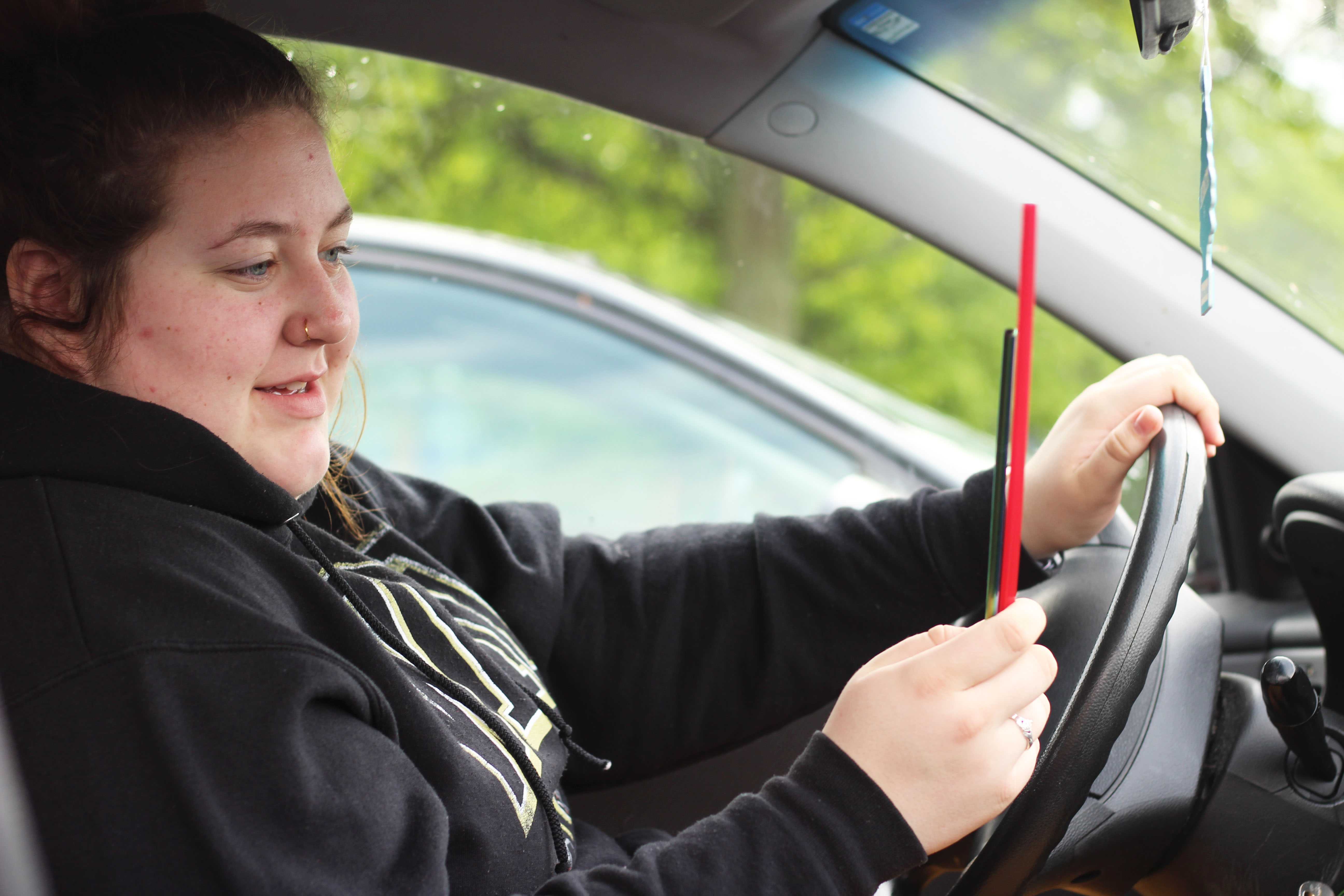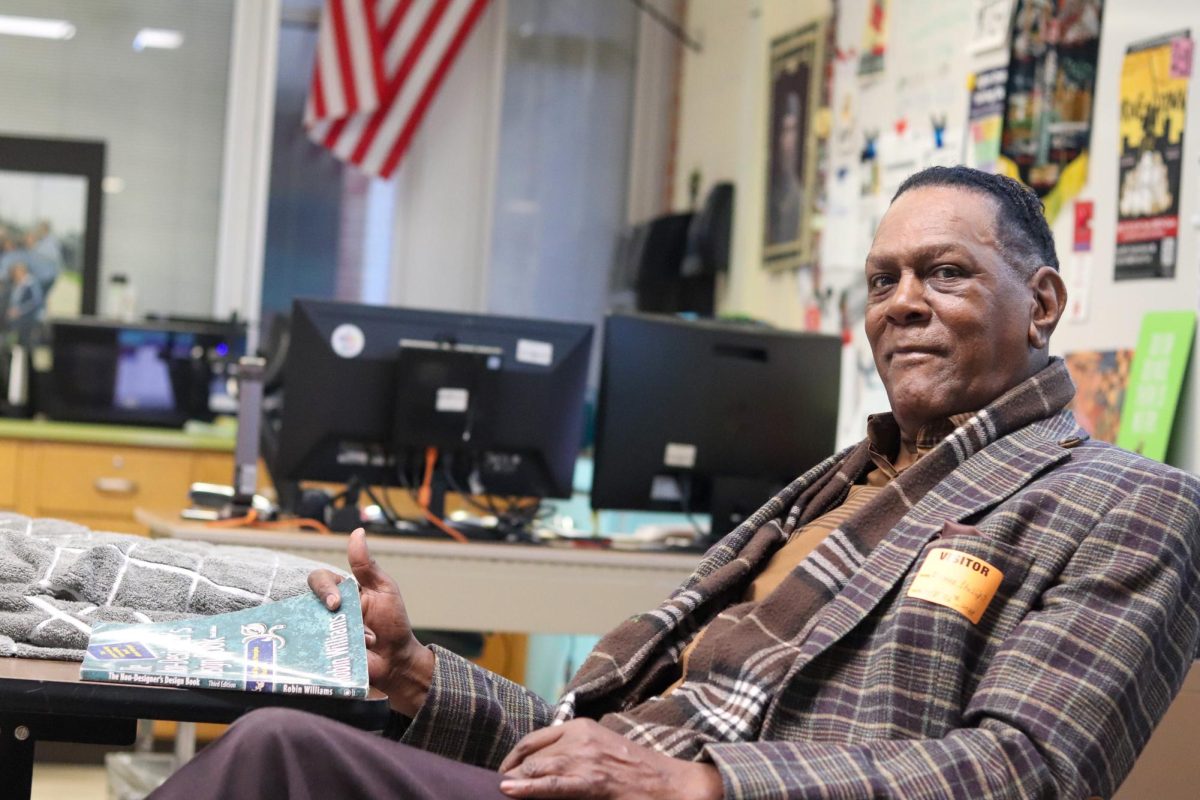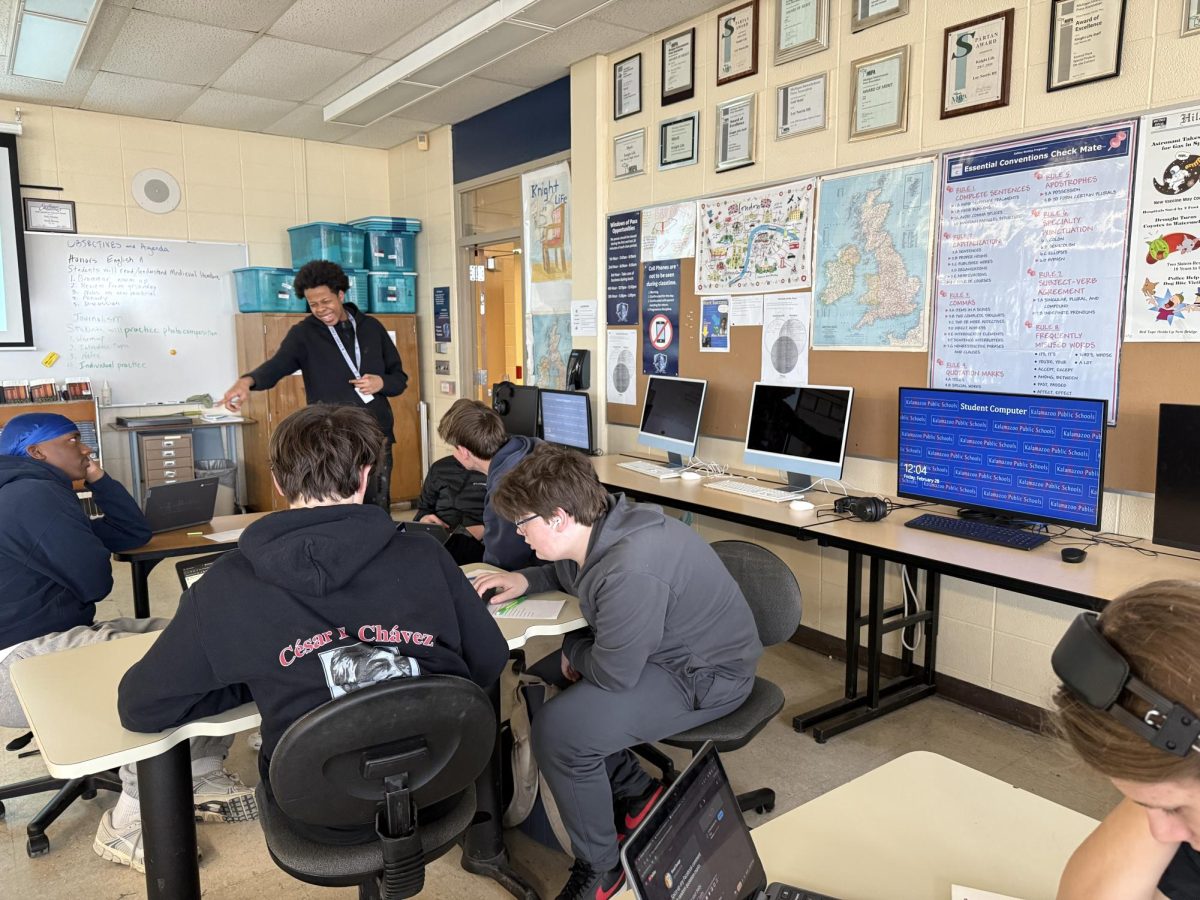By Gigi Fox

Loy Norrix senior Jaylee Lesatz has found an interest in environmental factors because she has recently learned about how people can change the way they treat the earth. “I’ve been trying to make sure my place on this planet is not being destructive,” said Lesatz.
Lesatz was annoyed with the amount of trash left behind by her fellow students at the academic pep assembly this past May, and rightly so. Parents and teacher volunteers made food for the students and in return, the kids littered the remains.
Students threw hot dog tin foil on the ground, leaving chip wrappers wherever they may fall. “There was so much trash on the ground, so then afterwards I started to help clean it up,” said Lesatz.
A lot of students aren’t getting involved in the Earth’s well-being. Anything you can do to help the environment, from using recyclable plastic, to throwing away the gum rappers found on the ground, will help reduce waste.
“It’s just the little things, and I think if everyone did something about it then it will help,” said Lesatz.
Lesatz is not a part of the Loy Norrix Peacejam club, but Peacejam annually clean the grounds of Loy Norrix for at least 3 hours every fall and spring, but it’s not just their job or one person’s, it’s the job of a group.
“It’s all about a matter of influencing others because other people don’t see what I see,” said Lesatz. Lesatz can’t clean up the entire Earth, but by leading and setting an example, she is being a role model for younger generations.
There are over 10 thousand landfills in just the United States. According to How Long Does it Take Plastic to Break Down by Alan Bernau, it takes one plastic straw 500 years to decompose. That is just one small straw out of millions that are used by people everyday. Mounds of trash waiting to decompose is the legacy millennials are leaving for generations to come.
Lesatz has multiple reusable straws in her car and one on her keychain, to remind herself to cut down on her use of plastic straws.
“I have been trying to recycle as much as I can. I’ve stopped using straws every time I go to a restaurant. I don’t need a straw, and if I do absolutely have to use one, I make sure it gets recycled,” said Lesatz. “I’ve got piles of them [straws] in my car because they [restaurants] give them to me even when I don’t need one. They still give them to m;, there’s just piles in my car waiting to go into my recycling bin.”
According to “Moore on Pricing: The Cost of Ocean Pollution,” by Peter Moore, it would take about $500 million dollars to clean up the entire ocean. As said by Military Spending In the United States by National Priorities Project, in 2015 the United States military budget was $598.5 billion dollars. The price to improve the environment could be gained easily with some budgeting cuts.
“They [government] could literally just lead ocean cleanup projects for millions of dollars,” said Lesatz. Ocean cleanup projects, doesn’t have to fall just on The United States shoulders. Major countries could add funds to the projects to speed up the process.
Environmental sustainability is a new found passion for Lesatz. Environmental sustainability is the balance between what humans can do to the Earth and what its limits are. How much one person can change their ecological footprint has been brought to light in recent years, according to Global Footprint Network. Instead of using plastic bags, people could use fabric reusable ones or use glass bottles instead of flimsy plastic ones.
“I’m just trying to make my mark a little bit better, I guess, because if people don’t start caring about it now, then you’re going to die 50 years earlier. That’s just how it is,” said Lesatz.
Everyone has their own role, big or small. Deposit your trash and recycle your school papers.









